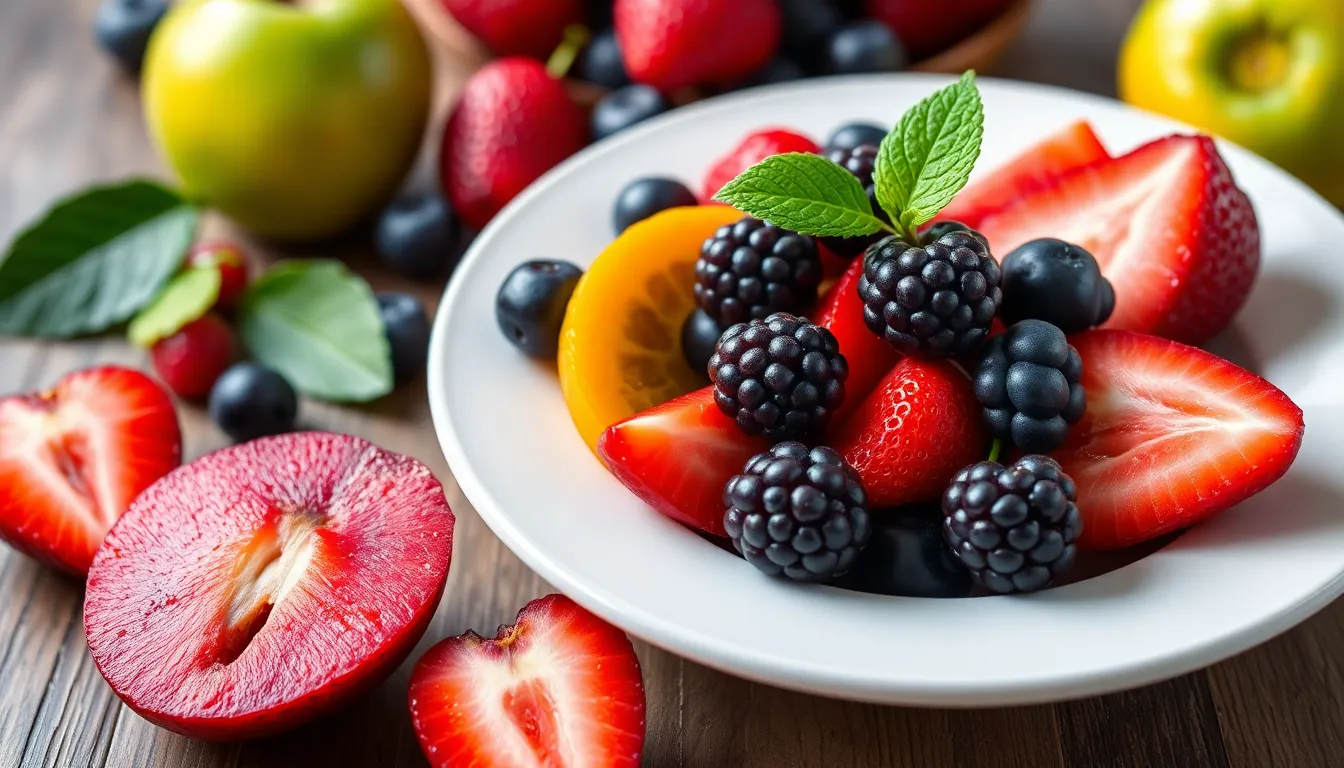The Best Fruits for Diabetics: Sweet Choices with Low Glycemic Index
Diabetes is a chronic condition that affects millions of people worldwide. It is characterized by elevated blood sugar levels, necessitating careful management of one’s diet. A significant aspect of this management involves understanding the glycemic index (GI) of foods, especially fruits, which can sometimes be perceived as high in sugar. This article aims to shed light on diabetes-friendly fruits that possess a low glycemic index, allowing those with diabetes to enjoy sweet choices without compromising their health.
Understanding Glycemic Index
The glycemic index is a ranking system that classifies foods based on their impact on blood sugar levels. It measures how quickly carbohydrates in food raise glucose levels in the bloodstream after consumption.
Foods with a high GI are rapidly digested and absorbed, leading to a quick spike in blood sugar. In contrast, low GI foods are digested more slowly, providing a steady release of glucose and promoting better blood sugar control.
For individuals with diabetes, choosing low GI foods can lead to improved blood sugar management and reduced risk of complications related to the condition.
Glycemic Index Scale
| Glycemic Index Range | Classification |
|---|---|
| 0-55 | Low GI |
| 56-69 | Moderate GI |
| 70 and above | High GI |
Benefits of Eating Fruits for Diabetics
Fruits are rich in essential nutrients, making them a valuable component of a diabetic diet. Here are some of the key nutritional advantages:
- Vitamins and Minerals: Fruits are packed with vitamins A and C, potassium, and magnesium, all of which play vital roles in overall health.
- Fiber: High-fiber fruits help slow digestion and the absorption of sugar, aiding in blood sugar control.
- Antioxidants: Many fruits contain antioxidants, which can help reduce inflammation and lower the risk of chronic diseases associated with diabetes.
The Best Low Glycemic Index Fruits
When selecting fruits for a diabetic diet, it is essential to choose those with a low glycemic index. Here is a list of some of the best options:
| Fruit | Glycemic Index | Serving Size | Key Nutrients |
|---|---|---|---|
| Cherries | 20 | 1 cup | Vitamin C, Fiber |
| Grapefruit | 25 | 1/2 medium | Vitamin A, Fiber |
| Pear | 38 | 1 medium | Vitamin C, Fiber |
| Apple | 39 | 1 medium | Vitamin C, Fiber |
| Berries (Blueberries, Strawberries) | 40 | 1 cup | Antioxidants, Fiber |
| Kiwi | 52 | 1 medium | Vitamin C, Fiber |
Tips for Incorporating Fruits into a Diabetic Diet
Integrating low GI fruits into your diet can be both enjoyable and beneficial. Here are some tips to help you do just that:
- Portion Control: Be mindful of serving sizes to prevent blood sugar spikes. Use measuring cups or a scale when necessary.
- Mindful Eating: Take your time to enjoy the flavors and textures of fruits to promote satiety and satisfaction.
- Snack Ideas: Consider snacking on fresh fruit, making fruit smoothies, or adding fruits to yogurt or oatmeal.
- Pairing: Combine fruits with proteins (like nuts) or healthy fats (like avocado) to further stabilize blood sugar levels.
Myths and Facts About Fruits and Diabetes
There are several misconceptions surrounding fruits and diabetes. Let’s clarify some common myths:
- Myth: Diabetics should avoid all fruits due to sugar content.
- Fact: Many fruits, especially those with low GI, can be safely included in a diabetic diet.
- Myth: Eating fruit is worse than eating candy for diabetics.
- Fact: Fruits provide essential nutrients and fiber, whereas candy offers empty calories and can lead to blood sugar spikes.
Conclusion
Choosing low glycemic index fruits is essential for those managing diabetes. These fruits offer not only a sweet treat but also a wide array of nutritional benefits. By incorporating a variety of these fruits into your daily meals, you can enjoy delicious flavors while maintaining better blood sugar control. We encourage you to experiment with different recipes and snack ideas, and don’t hesitate to share your favorite low GI fruit recipes in the comments!
Additional Resources
For further reading and tips on diabetes management and nutrition, check out these valuable resources:
| Resource Title | Link |
|---|---|
| American Diabetes Association | ADA Website |
| Glycemic Index Foundation | GI Foundation Website |
| Diabetes Self-Management | Diabetes Self-Management Website |




